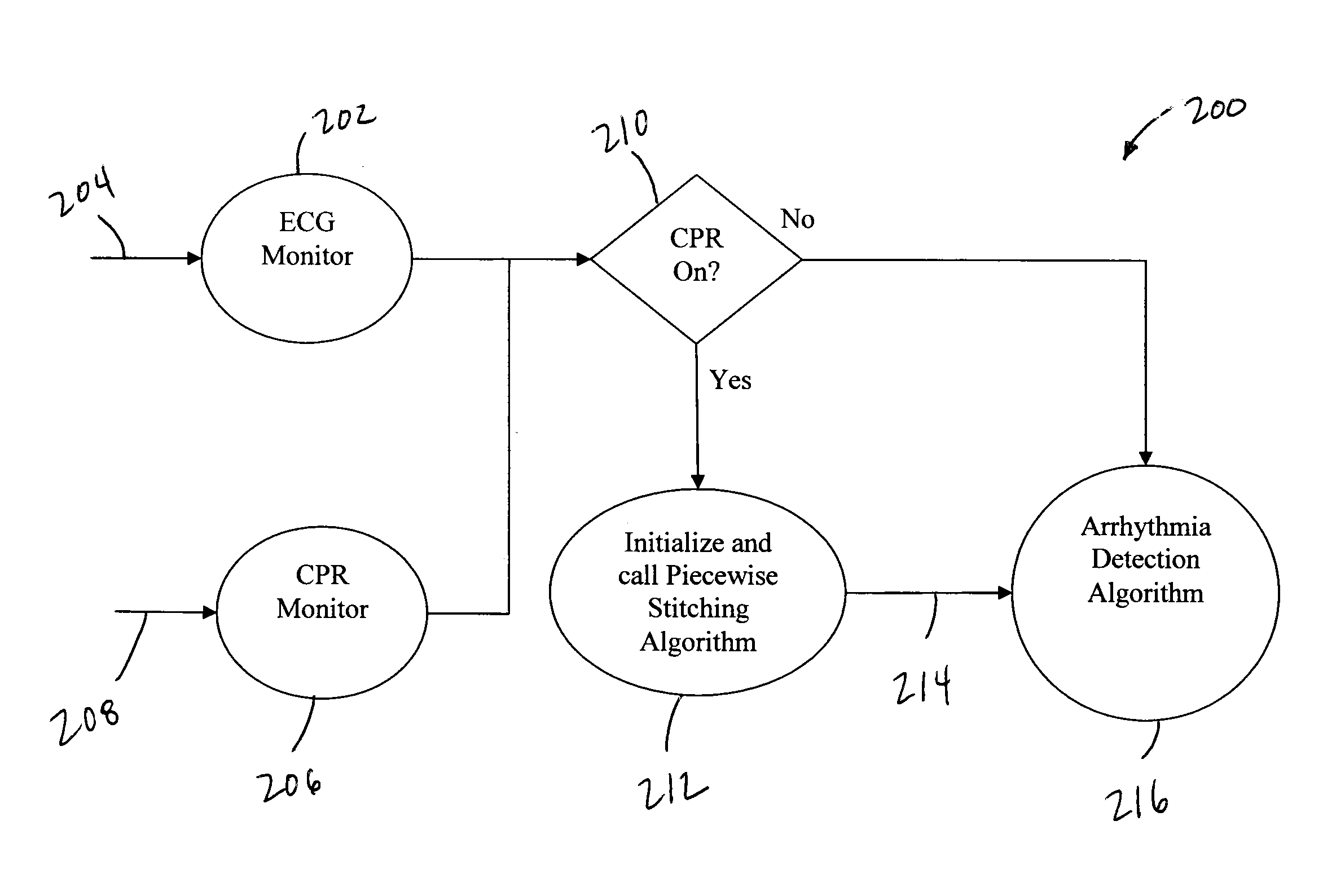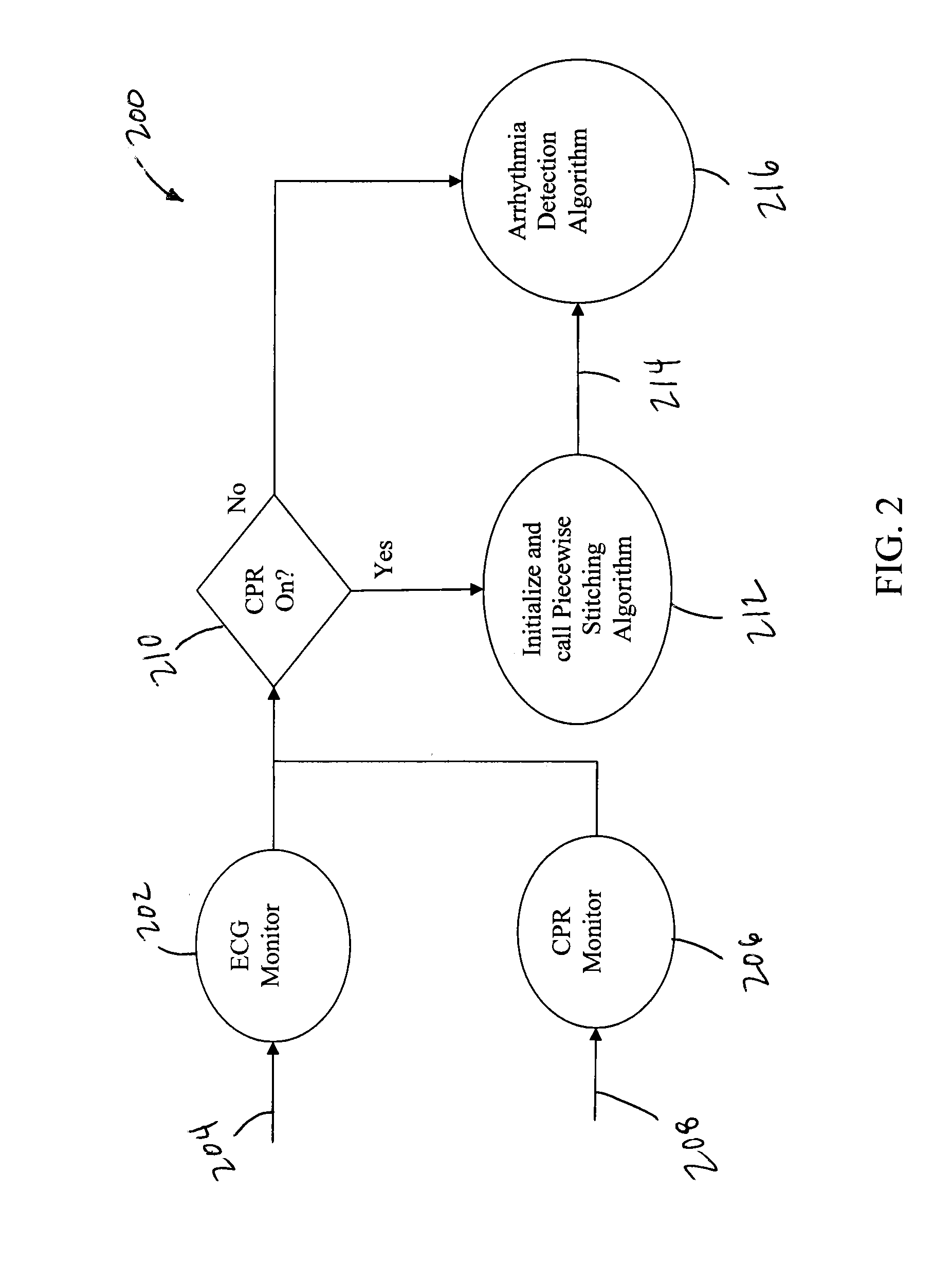True ECG measurement during cardio pulmonary resuscitation by adaptive piecewise stitching algorithm
a piecewise stitching and true ecg technology, applied in the field of ecg signal processing, can solve problems such as the applicator's delay in sensing, and achieve the effects of reducing the required power and latency of therapy application, optimizing filtering and sensing, and increasing weigh
- Summary
- Abstract
- Description
- Claims
- Application Information
AI Technical Summary
Benefits of technology
Problems solved by technology
Method used
Image
Examples
Embodiment Construction
[0032]As mentioned in the background, several algorithms have been implemented in current AEDs in an attempt to meet the revised AHA Guidelines for Cardiopulmonary Resuscitation and Emergency Cardiovascular Care. One implementation is the adaptive filter technology, which is briefly reviewed here in relation to a general schematic of an AED incorporating such algorithm as provided in FIG. 1.
[0033]While adaptive filters may be implemented utilizing several algorithms, Least Mean Square (LMS) algorithm, and its derivatives, is utilized most often. In a LMS adaptive filter, a mean square cost function is assumed (i.e.) ξ=E[e2(n)]. The adaptive filter then minimizes the instantaneous squared error, ξ(n), using the steepest gradient algorithm. This algorithm, updates the coefficient vector in the negative gradient direction with step size μ. For example, in case of a FIR adaptive filter you have:
w(n+1)=w(n)−μ2.N′ξ(n) (A)
[0034]where weights w(n) can be adjusted every sample. Another alg...
PUM
 Login to View More
Login to View More Abstract
Description
Claims
Application Information
 Login to View More
Login to View More - R&D
- Intellectual Property
- Life Sciences
- Materials
- Tech Scout
- Unparalleled Data Quality
- Higher Quality Content
- 60% Fewer Hallucinations
Browse by: Latest US Patents, China's latest patents, Technical Efficacy Thesaurus, Application Domain, Technology Topic, Popular Technical Reports.
© 2025 PatSnap. All rights reserved.Legal|Privacy policy|Modern Slavery Act Transparency Statement|Sitemap|About US| Contact US: help@patsnap.com



